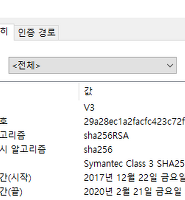| 일 | 월 | 화 | 수 | 목 | 금 | 토 |
|---|---|---|---|---|---|---|
| 1 | 2 | 3 | 4 | 5 | 6 | |
| 7 | 8 | 9 | 10 | 11 | 12 | 13 |
| 14 | 15 | 16 | 17 | 18 | 19 | 20 |
| 21 | 22 | 23 | 24 | 25 | 26 | 27 |
| 28 | 29 | 30 |
- Django REST framework
- Android
- livedata
- 알고리즘
- android architecture component
- 안드로이드 구글맵
- mfc
- C++
- Django REST Android
- kodility
- Flutter TextField
- android push
- Django REST
- NDK
- RxAndroid
- Rxjava2
- 프로그래머스
- Kotlin
- RxJava
- dart
- 안드로이드
- FLUTTER
- Python
- UWP
- 코틀린
- C/C++
- Java
- C
- flutter firestore
- Android P
- Today
- Total
개발하는 두더지
[Kodility] A binary gap 본문
A binary gap within a positive integer N is any maximal sequence of consecutive zeros that is surrounded by ones at both ends in the binary representation of N.
For example, number 9 has binary representation 1001 and contains a binary gap of length 2. The number 529 has binary representation 1000010001 and contains two binary gaps: one of length 4 and one of length 3. The number 20 has binary representation 10100 and contains one binary gap of length 1. The number 15 has binary representation 1111 and has no binary gaps. The number 32 has binary representation 100000 and has no binary gaps.
Write a function:
class Solution { public int solution(int N); }
that, given a positive integer N, returns the length of its longest binary gap. The function should return 0 if N doesn't contain a binary gap.
For example, given N = 1041 the function should return 5, because N has binary representation 10000010001 and so its longest binary gap is of length 5. Given N = 32 the function should return 0, because N has binary representation '100000' and thus no binary gaps.
Write an efficient algorithm for the following assumptions:
- N is an integer within the range [1..2,147,483,647].
// you can also use imports, for example: // import java.util.*; // you can write to stdout for debugging purposes, e.g. // System.out.println("this is a debug message"); class Solution { public int solution(int N) { // write your code in Java SE 8 String binary = Integer.toBinaryString(N); int start = 0, end = 0; start = binary.indexOf("1"); end = binary.lastIndexOf("1"); String newBinary = binary.substring(start, end + 1); String[] spilts = newBinary.split("1"); int max = 0; for(String s : spilts) { if(s.length() > max) max = s.length(); } return max; } }
'알고리즘' 카테고리의 다른 글
| [Kodility] OddOccurrencesInArray (0) | 2019.01.30 |
|---|---|
| SHA-1 지원 중단으로 인한 SHA-2 표준 적용 (0) | 2018.09.18 |
| [리트코드 102] Binary Tree Level Order Traversal (0) | 2018.09.15 |
| [리트코드 94] Binary Tree Inorder Traversal (0) | 2018.09.15 |
| [프로그래머스] 행렬의 곱셈 (0) | 2018.04.20 |





